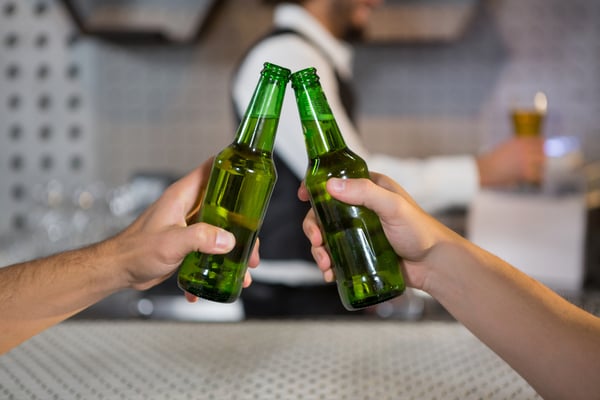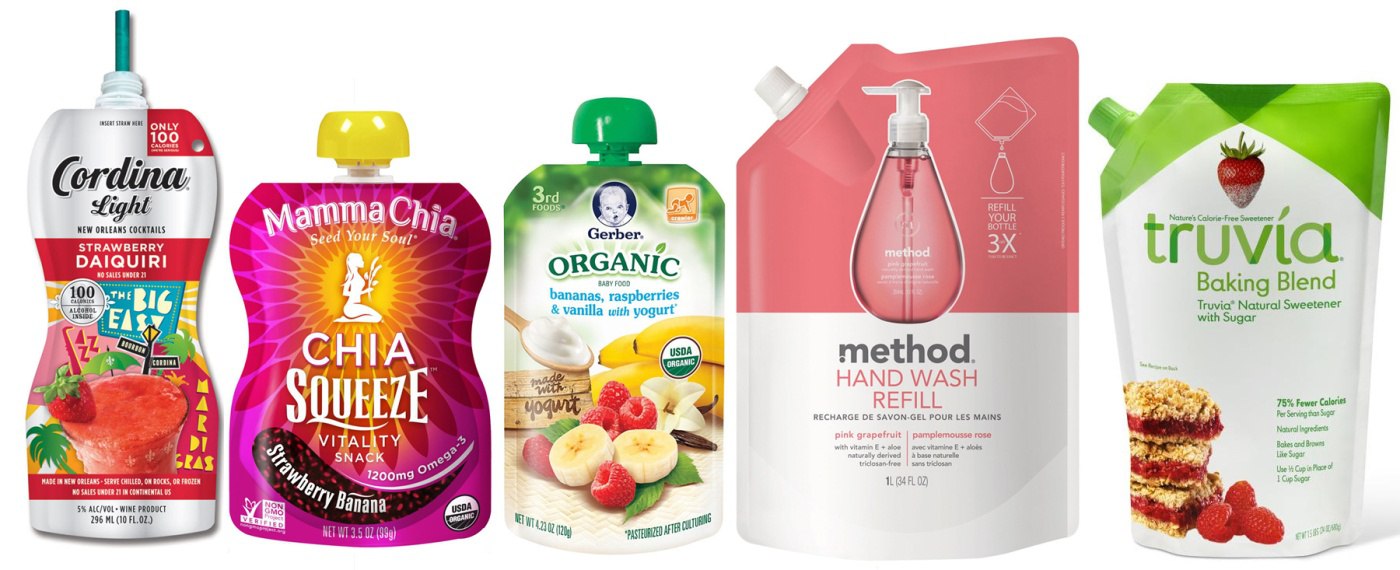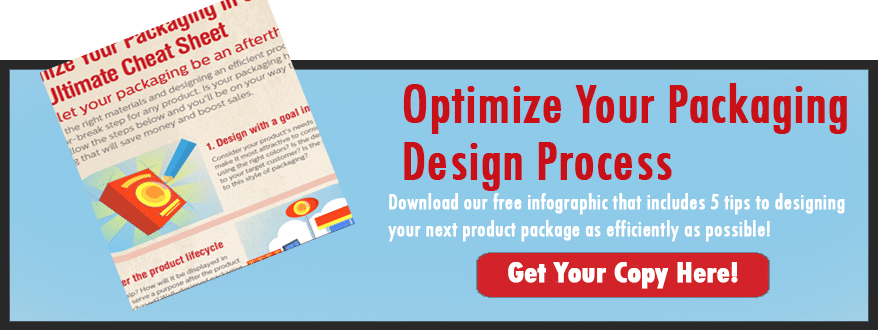Flexible Packaging VS Glass Packaging: Pros And Cons
Packaging Materials | Environment | Investment | Packaging Design
When you are searching for a material to package your products in, there are countless options available. Today, both flexible packaging supplies like stand up pouches and traditional materials like glass are very popular. When choosing between flexible packaging (plastic) and glass, there are various pros and cons to each.
Here at Industrial Packaging, we have been selling flexible packaging supplies for over 60 years. We know exactly which applications are right for flexible packaging supplies and are honest about those which are not. When it comes down to it, there are certain applications that are best for plastics and those which are better suited for glass. We will be comparing variations of each material, looking at the pros and cons. This article should provide insight into which option is the right choice for your packaging needs.
Pros And Cons Of Glass Packaging
People have been packaging products in glass containers for hundreds of years. From whiskey bottles to baby food, the types of products packaged in glass are virtually endless. Having been part of the human experience for so long, glass often produces an interesting effect on the consumer. Seen as having an air of luxury and/or vintage aesthetic, glass is often chosen for its smooth texture, non-porous attributes, hand feel, weight, and visual appeal.
For example, there is a new trend (most popular among millennials) of spending what some might consider an excessive amount of money on fancy water bottles. When it comes to projecting an air of luxury or social status, this particular trend hits serious sales potential when companies are selling $28 bottled water (in glass).
Glass containers are primarily used for the packaging of food, especially liquids such as soda, water, beer, and tea. It has also been widely adopted for the packaging of legal cannabis items. And while glass bottles used for these purposes cost more than their plastic counterparts, many companies and consumers opt for the glass container.
This is in part due to the fact that glass (unlike plastic) retains the true flavor of the contents. Plastic containers can alter the taste of food or liquids due to shelf life dynamics or exposure to extreme temperatures. And as plastic is porous, it does not retain carbonation, flavor or scent as well as glass.

Furthermore, when it comes to carbonated beverages, glass sustains carbonation for much longer periods of time than plastic. In this case, many consumers choose glass bottles over plastic when storing liquids for long periods of time, for example; vanilla extract.
Now, while the storage dynamics, aesthetic and the luxury of glass are popular reasons for their use in countless packaging applications, many consumers buy glass containers for a completely different reason...
As mentioned earlier, consumers will be exponentially more focused on recycling, sustainability, earth-friendliness and green product options as we move through and beyond 2020.
In this respect, glass is a bit of a conundrum...
Many companies are currently switching to glass as more and more consumers are becoming consciously aware of the extremely detrimental effect of plastic on our environment (such as the great pacific garbage patch).
Need Help Designing Your Packaging?
In response to this growing mass awareness of plastic related pollution, many people are demanding that their favorite brands switch from plastic containers to glass. This produces a sense of being part of an earth-friendly revolution in consumerism.
Glass is 100% recyclable and the new products made from it's recycled material do not lose integrity via the recycling process (as plastic does) however, a lot of glass still ends up in landfills. The rise of glass in a world focused on sustainability is partially the result of misinformation and green-washing.
The uncomfortable truth about glass is that based on multiple scientific studies, plastic is significantly less harmful to our environment. While that may be a hard pill to swallow, multiple scientific studies have proven it to be true.
Glass is more detrimental to our environment than plastic because of the processes involved in manufacturing the material and the subsequent weight of glass containers in shipping. These dynamics of glass production and delivery result in the fact that glass has a much higher carbon footprint than plastic.
PROS OF GLASS PACKAGING:
- Aesthetic And Physical Appeal
- Air Of Luxury
- Non-Porous
- Infinitely Recyclable
- Does Not Affect The Flavor Of Food Or Beverage Products
- Longer Shelf Life
CONS OF GLASS PACKAGING:
- Significantly Costlier Than Plastic
- Expensive To Make
- Expensive To Ship
- Uses Excessive Energy To Produce
- High Carbon Footprint
- Easy To Break
- Can Not Be Recycled If Contaminated With Adhesives Or Other Materials
Pros And Cons Of Flexible Packaging
With a large variety of materials in flexible packaging, you will be able to create a package that can stand, hang or sit with ease. Basically, flexible packaging has a potential solution for every product and the packaging works to enhance the product contained within.
Flexible packaging films such as shrink film and stretch film are created for a multitude of applications and environments. Some forms of flexible packaging are created with a specific focus on elements such as; strength and tear resistance, distribution safety protocols, extended shelf life, food safety, the preservation of freshness and protection from environmental elements.
Flexible packaging is designed to protect products from moderate fluctuations in temperature, light, moisture, and gas. For example, flexible films help to maximize the shelf life of perishable goods and can conceal the smell of the contents of the package.
Now, while there are many different types of flexible packaging to choose from, in an effort to talk apples to apples here, we are going to focus on one type of flexible packaging. Stand up pouches are commonly used in place of glass containers and is often used to package many of the same items (food, liquids, perishable goods).

Stand-up pouches were created using soft flexible packaging plastics and are now extremely common in supermarkets, gas stations and countless other retail establishments across the USA. Stand up pouches are particularly popular for packaging products containing high concentrations of liquids (soups, sauces, energy drinks, juice, etc.).
These pouches are very strong and unlike glass, quite resistant to breakage due to fall. Stand up pouches are an excellent and affordable alternative to glass. If you are looking for packaging materials to protect your goods from physical harm or potential environmental threats, stand up pouches may be right for you.
Additionally, stand up pouches can be fully covered end to end, in beautiful full-color graphics, logos and design elements that will help to catch the eyes of consumers. Just like glass jars, they are completely resealable. There are also specialty stand up pouches with child safety locks that will ensure sensitive items such as pharmaceuticals have an extra layer of protection.
Stand-up pouches are made from flexible packaging plastics, which are porous. As such, using them to package foods or beverages may result in alterations in flavor or scent, especially if exposed to extreme temperatures for extended periods of time during shipping or storage.
Unfortunately, stand up pouches are not recyclable, although, they do take up much less space on store shelves and in landfills.
While some flexible packaging materials such as stand up pouches are not recyclable, some are. That being said, many towns and municipalities do not have the appropriate recycling infrastructure to recycle these types of plastics. They often require third party recycling companies to handle the material which can be costly (but not always). For these reasons, even recyclable forms of flexible packaging often end up in landfills.
PROS OF FLEXIBLE PACKAGING: (SPECIFICALLY, STAND UP POUCHES)
- Uses Less Energy To Produce Than Glass
- Lowest Carbon Footprint Of Most Common Packaging Supplies
- Light Weight
- Less Costly Than Glass
- Tear And Breakage Resistant
- Lower Shipping Cost Than Glass
CONS OF FLEXIBLE PACKAGING: (SPECIFICALLY, STAND UP POUCHES)
- Hard Or Impossible To Recycle
- Takes Around 1,000 Years To Fully Degrade
- May Affect The Flavor Of Food Or Liquids
- Low Resistance To Extreme Temperature During Storage
- Porous
- Mild-Moderate Potential To Induce Wrap Rage
Flexible Packaging VS Glass Packaging: Which Is Right For You?
If you are looking for a type of packaging that has an air of luxury, retains the integrity of the flavor or scent of the items inside, can stand up well to extreme temperatures for extended periods, and/or is 100% recyclable... GLASS is the perfect type of packaging for your particular needs!
On the other hand, if you are looking for a much more affordable option that has the lowest carbon footprint of the current most common packaging materials, takes up less space in landfills and offers vibrant, full-color, edge to edge graphic design elements, then some form of flexible packaging like resealable stand up pouches would be a better fit for you.
If YOU fall into the second category then Industrial Packaging can most certainly help you. If not, then we are not the right packaging vendor for you. Regardless of which camp you fall into, hopefully, this article has allowed you to make a decision on what packaging might be best for your products. If you need further assistance or have any unanswered questions on this topic, please contact one of our packaging professionals.
If you’d like to learn more about flexible packaging, we’ve created a buying guide. Here you can learn what you must consider when purchasing flexible packaging for your product.
About Nathan Dube
As the Digital Marketing Specialist at Industrial Packaging, I am honored to create content for such a phenomenal company and work with one of the greatest teams in the Packaging Industry. Whether creating a video, writing blog posts or generating other pieces of content and multimedia, I am always excited to help educate and inspire our prospects and clients to reach their highest potential in regards to their packaging processes and needs.




